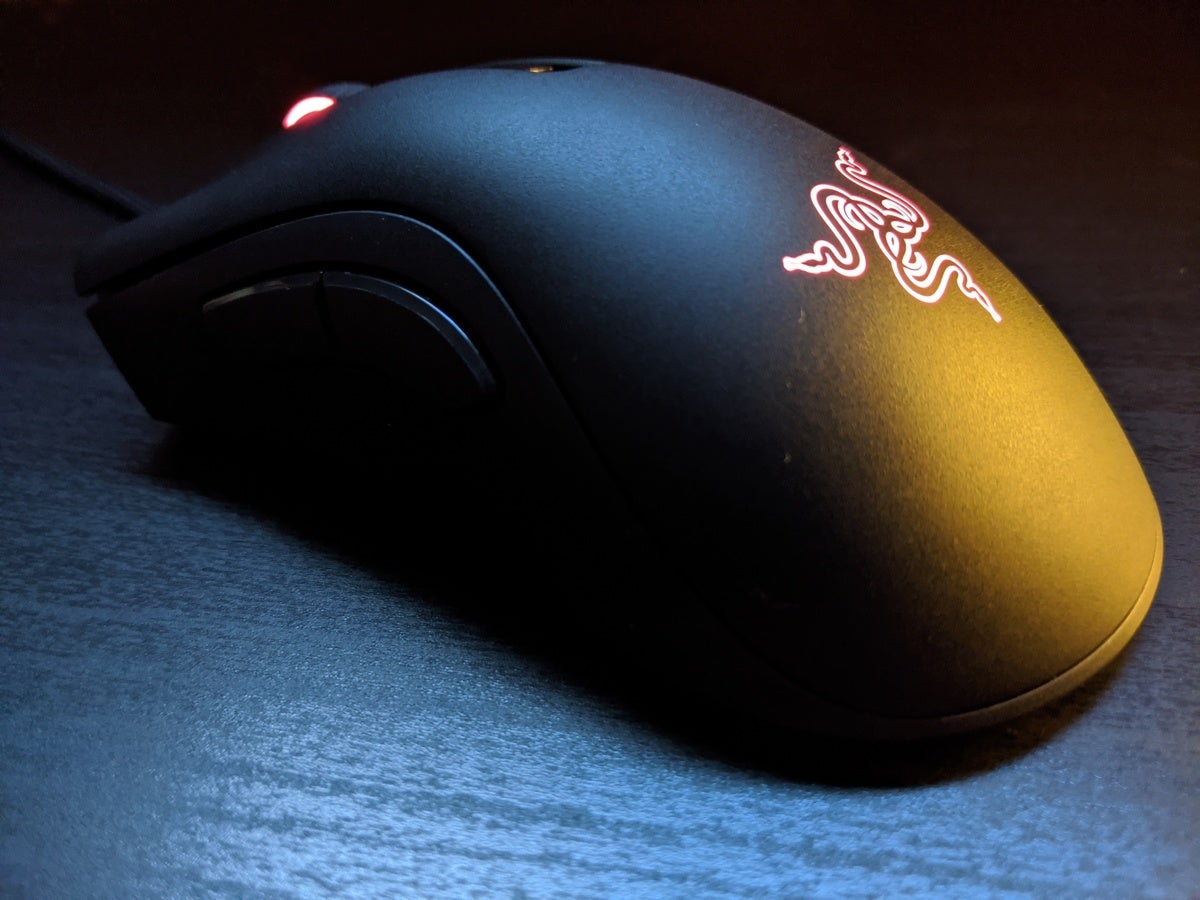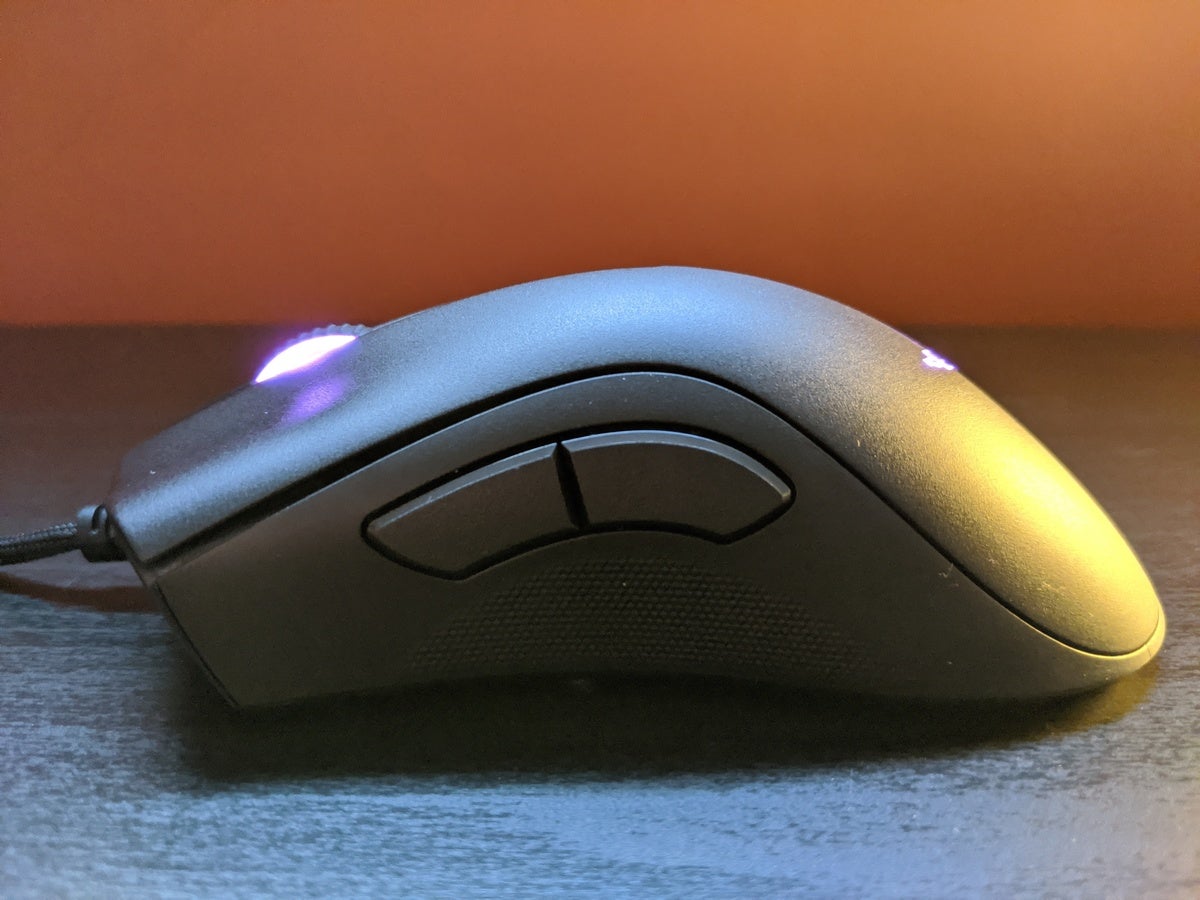Razer first released its iconic DeathAdder mouse in 2006. Thirteen years later, there have been multiple revisions and even more special edition reskins. In 2020, we’re arguably on...let’s call it the Razer DeathAdder 7. Maybe 8? It depends on how you look at it.
And yet Razer would argue otherwise. For 2020, Razer’s chosen a name for its new DeathAdder so daring, we had to sit up and take notice: the Razer DeathAdder V2. Forget the past decade, this is the first deserving successor to the original DeathAdder—or at least, that’s what Razer would like us to believe.
How does it fare then? Is the DeathAdder V2 worth the name? Is it so revolutionary, it deserves this bit of pageantry? Well…
Note: This review is part of our roundup of best gaming mice. Go there for details on competing products and how we tested them.
Hello old friend
It’s a DeathAdder. I’ll be honest, when I saw the DeathAdder V2 moniker, I thought we were in for a substantial redesign—and it’s not that. Pull the DeathAdder V2 out of the box and it looks much the same as any other model this past decade.
That’s weird, right? I find it weird, anyway. Model names are always a bit arbitrary—just look at the Xbox. But “V2” is quite a statement for a mouse as storied as the DeathAdder. It’s one of the most widely acclaimed designs ever. Surely Razer could’ve come up with some new synonym for “Elite” instead.
 IDG / Hayden Dingman
IDG / Hayden DingmanWhich is not to imply that nothing’s changed. Razer’s tweaked the DeathAdder for 2020. They’re mostly the kind of incremental upgrades we’re all used to though.
The standout is probably the DeathAdder V2’s new “Speedflex” cable. At this point I’ve completely changed over to wireless mice for day-to-day use, thanks to Logitech’s PowerPlay charging tech. That said, if I were still using wired mice, this cabling is what I’d want on every single mouse I own.
I don’t even know how to describe it, except to say it’s softer than any cable I’ve ever seen. You know how usually you pull a mouse out of its box and the cable sort of retains the shape of the coil it shipped with? Not the DeathAdder V2.
It’s supple, both the fabric sheathe and the wiring inside. It doesn’t kink. It doesn’t tangle. It doesn’t catch on anything. It’s the best cabling solution I’ve tested short of, you know, not having a cable at all. The only issue I can think of is it might not work well with those desk-mounted cable retractors some people use—but with a cable this flexible, I don’t even know if you’d need one.
So that’s the first change, and it’s a good one. Not necessarily deserving of the “V2” name, but impressive nevertheless.
 IDG / Hayden Dingman
IDG / Hayden DingmanRazer also upgraded the mouse sensor, the definition of an incremental upgrade if I’ve ever heard one. The latest Razer sensor is dubbed Focus+, and this one goes to 20,000 DPI instead of the 16,000 DPI hit by Razer’s last sensor, the PMW3389.
Truth is, you won’t notice. Those numbers are both so extraordinarily high, I can’t imagine anyone touching the upper bounds in day-to-day use. Not even close. And as far as accuracy, anything made post-PMW3360 is pretty much spot-on perfect. The next battlefield is making a more efficient sensor for wireless mice, but given the DeathAdder V2 is wired? That isn’t relevant.
Lastly, the buttons. First of all, the DeathAdder’s been upgraded from a five-button mouse to an eight-button mouse. It’s about time, really. There are the usual left-, right-, and middle-click, plus two thumb buttons, same as any DeathAdder. Razer’s added two buttons behind the mouse wheel though, finally bringing the DeathAdder in lockstep with the rest of Razer’s lineup—the Basilisk, the Mamba, the Naga, and so forth.
The eighth button is subtle. I actually counted over and over and kept coming up with seven—until I noticed an eighth on the bottom of the DeathAdder V2. It defaults to changing between profiles, and really it’s hard to imagine what else you’d use it for. It’s not accessible while using the DeathAdder V2, and honestly I barely remembered it was there while testing. In my head it’s a seven-button mouse, no matter what Razer says.
 IDG / Hayden Dingman
IDG / Hayden DingmanStill, seven buttons is a sweet spot nowadays and I’m happy Razer added the two up top. That layout has become so commonplace that I didn’t even register that they were new at first. “Hasn’t the DeathAdder always had these?” It feels that way.
Anyway, Razer’s biggest bet isn’t even visible to the user. Having forged ahead with optical keyboard switches, Razer’s now experimenting with optical mouse switches as well. And if I had to guess, that’s what makes this the DeathAdder V2.
As with its keyboard efforts, Razer isn’t first to adopt optical mouse switches. A4Tech’s been using them under the “Bloody” brand for a few years now. Razer’s the first major manufacturer to make the changeover though.
And once again, Razer’s leading with perhaps the least salient selling point. They’re so fast. Clicks register in 0.2 milliseconds. Can you believe it?
Razer’s not lying per se, but it’s ridiculous that the so-called speed benefits keep getting pride of place. Razer’s own copy acknowledges that this is “three times” faster than the competition, meaning a difference between 0.2 milliseconds and 0.6 milliseconds actuation. That’s...nothing. It sounds big in isolation, but consider that running a game at 60 frames per second means it takes fully 16 milliseconds for the display to draw each frame. A difference of 0.4 milliseconds between optical and mechanical mouse switches is insignificant.
 IDG / Hayden Dingman
IDG / Hayden DingmanDurability is what Razer should be leading with. Like mechanical keyboard switches, mechanical mouse switches are prone to damage—especially if abused. The dreaded “double click” is a common manifestation: Press the mouse button once, and your PC reads it twice. This comes from mashing your mouse button and damaging the contacts. Optical switches are thus immune because the “contacts” are replaced by a laser beam. It’s pretty difficult to damage light.
If you don’t know your own strength and have left many a dead mouse in your wake, maybe optical switches are your salvation. Me? I’ve never had a mouse die in that specific fashion. Maybe I’ve just been lucky, or maybe I simply have a gentle trigger finger. Hard to know.
Either way, I don’t think it’s a rush-out-and-buy situation. Razer’s ahead of the trend here, and unlike keyboards—where mechanical switches have a specific feel and a devoted following—I could see mice fully ditching mechanical switches for optical eventually. But these are early days, and it’s not a massive quality-of-life upgrade. More of a lateral move, actually. They may be more durable, but I also find the DeathAdder V2’s clicks stiffer and significantly louder than the previous DeathAdder Elite.
Bottom line
Whether or not the DeathAdder V2 deserves such an auspicious name, it’s definitely a decent upgrade by Razer. Once its most celebrated mouse, the DeathAdder has seemed a bit superfluous since the introduction of the Basilisk and Mamba—both right-handed mice with a lot more functionality than the past few DeathAdder models.
The V2 doesn’t fully close that gap, but it does narrow it. The new DPI buttons add some new tricks without affecting the DeathAdder’s time-tested shape, and while I still prefer a wireless mouse nowadays the V2’s flexible cabling is impressive. There are better mice out there, but for the DeathAdder diehards, this is finally, some much-needed love.
"like this" - Google News
January 17, 2020 at 06:30PM
https://ift.tt/35Y7R77
Razer DeathAdder V2 review: We like the upgrades, but what's with the weighty name? - PCWorld
"like this" - Google News
https://ift.tt/2MWhj4t
Shoes Man Tutorial
Pos News Update
Meme Update
Korean Entertainment News
Japan News Update
No comments:
Post a Comment